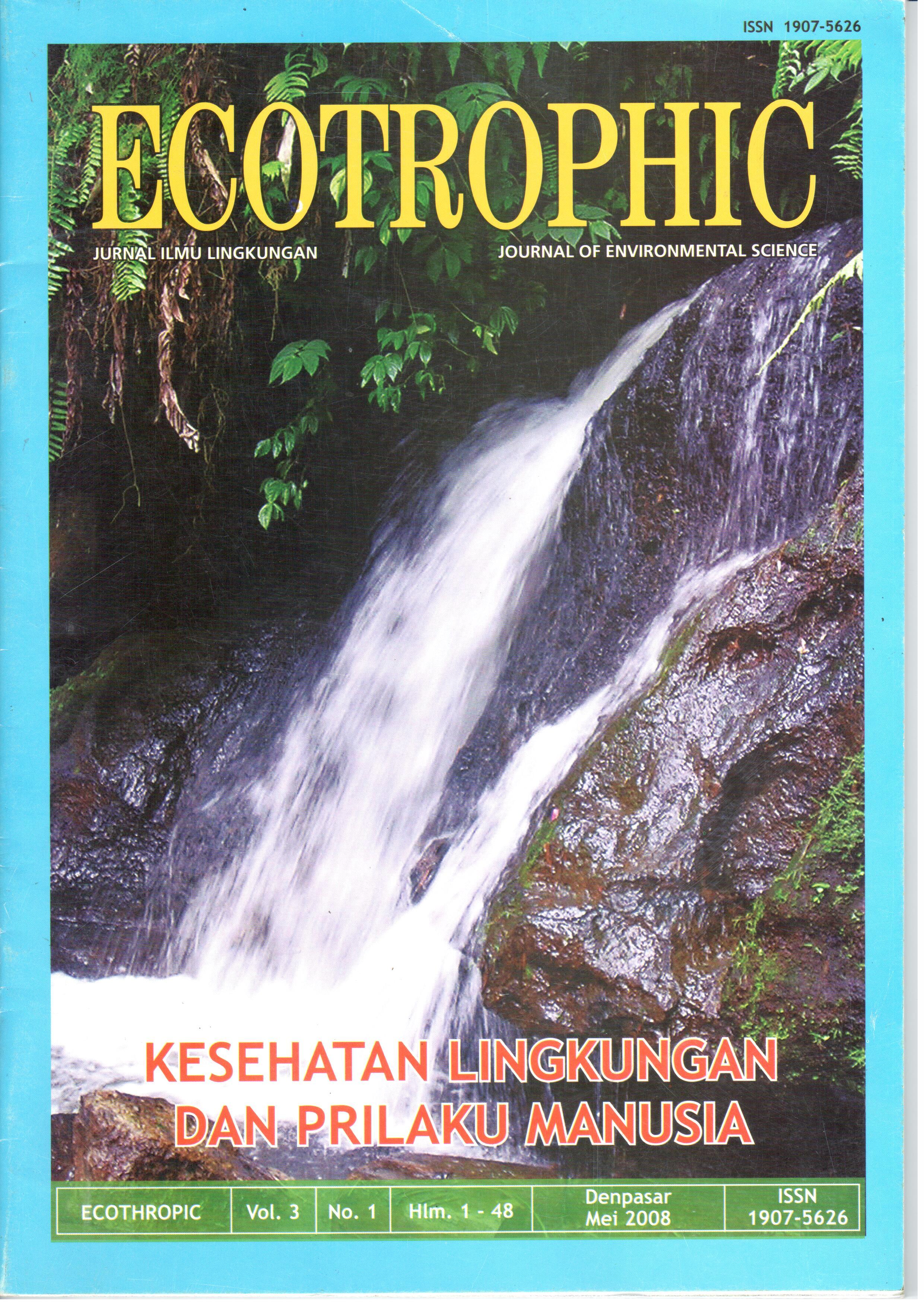KAJIAN EKOLOGIS PENGELOLAAN TAMBAK UDANG DI DUSUN DANGIN MARGA DESA DELODBRAWAH KECAMATAN MENDOYO KABUPATEN JEMBRANA BALI
Abstract
This study was conducted at the Village of Delodbrawah, Jembrana Regency, Bali. It was aimed to know the managementpattern available at the Village of Delodbrawah, the effect of maintenance to the water quality of shrimp pond and river, vegetation
condition and river biota. The study was conducted for approximately 3 months in each pond starting from January up to May 2007.
Shrimp ponds found in the Village of Delodbrawah use intensive and semi intensive management with open system where the
change its water maximaly from well and river. Semi intensive pattern used vitamin C as a mixture of food and the intensive one used
garlic (Allium sativum L) as antibiotic. The use of natural antibiotics can increase the age of the shrimps up to 96 days before it was
harvested. While the one using other probiotics, the age of the shrimps was 88 – 90 days shorter after it was harvested.
The data of water quality showed that pond 1 that used intensive system had more stable water quality parameter and support
the culture compared with other blocks. At the end of the culture of PO4 and NO2 tends to increase blooming plankton such as
Chlorella sp, Oscillatoria sp, Cyclotella sp. But it did not affect the quality of river water which was still under the threshold of
standard quality of water class III Government Regulation of the Republic of Indonesia Number 82 of 2001 concerning the
Management of Water Quality and Water Pollution Control.
Vegetation around the shrimp ponds were dominated by Nipah (Nypa fruticans Wurm) in the location nearing the river estuary.
From the production data pond 1 had the best production, related to the nipah functioning as bioremediator of surrounding waters.
The other location is near palawija plants. The most prominent river biota is kijing (Bivalvia) which looked bigger and many in
numbers in the location where there are two disposal channels, pond disposal and agricultural channel that transports higher organic
substance to be disposed to the river. Affectiveness of the intensive pond management optimally produces the oldest age of 96 days, the harvest of 3,964 – 4,271
kg/1500 m2, Survival Rate (SR) of 98% and Feed Convertion Ratio (FCR) of 1,32
Downloads
Download data is not yet available.
How to Cite
BANUN, Syachry; ARTHANA, Wayan; SUARNA, Wayan.
KAJIAN EKOLOGIS PENGELOLAAN TAMBAK UDANG DI DUSUN DANGIN MARGA DESA DELODBRAWAH KECAMATAN MENDOYO KABUPATEN JEMBRANA BALI.
ECOTROPHIC : Jurnal Ilmu Lingkungan (Journal of Environmental Science), [S.l.], v. 3, n. 1, nov. 2012.
ISSN 2503-3395.
Available at: <https://ojs.unud.ac.id/index.php/ecotrophic/article/view/2482>. Date accessed: 16 dec. 2025.
Issue
Section
Articles
Keywords
Management, water quality, vegetation, river biota, shrimp pond


